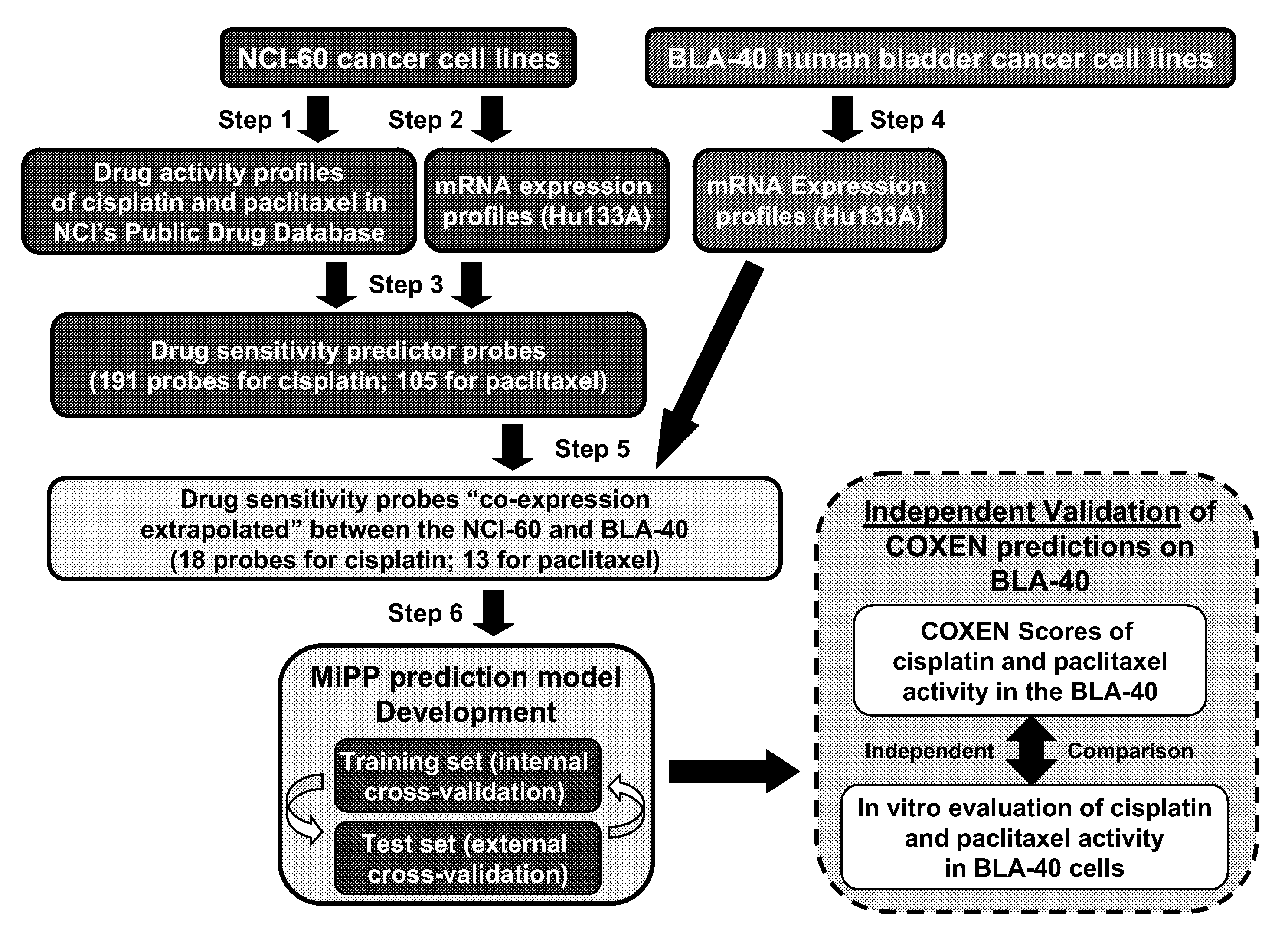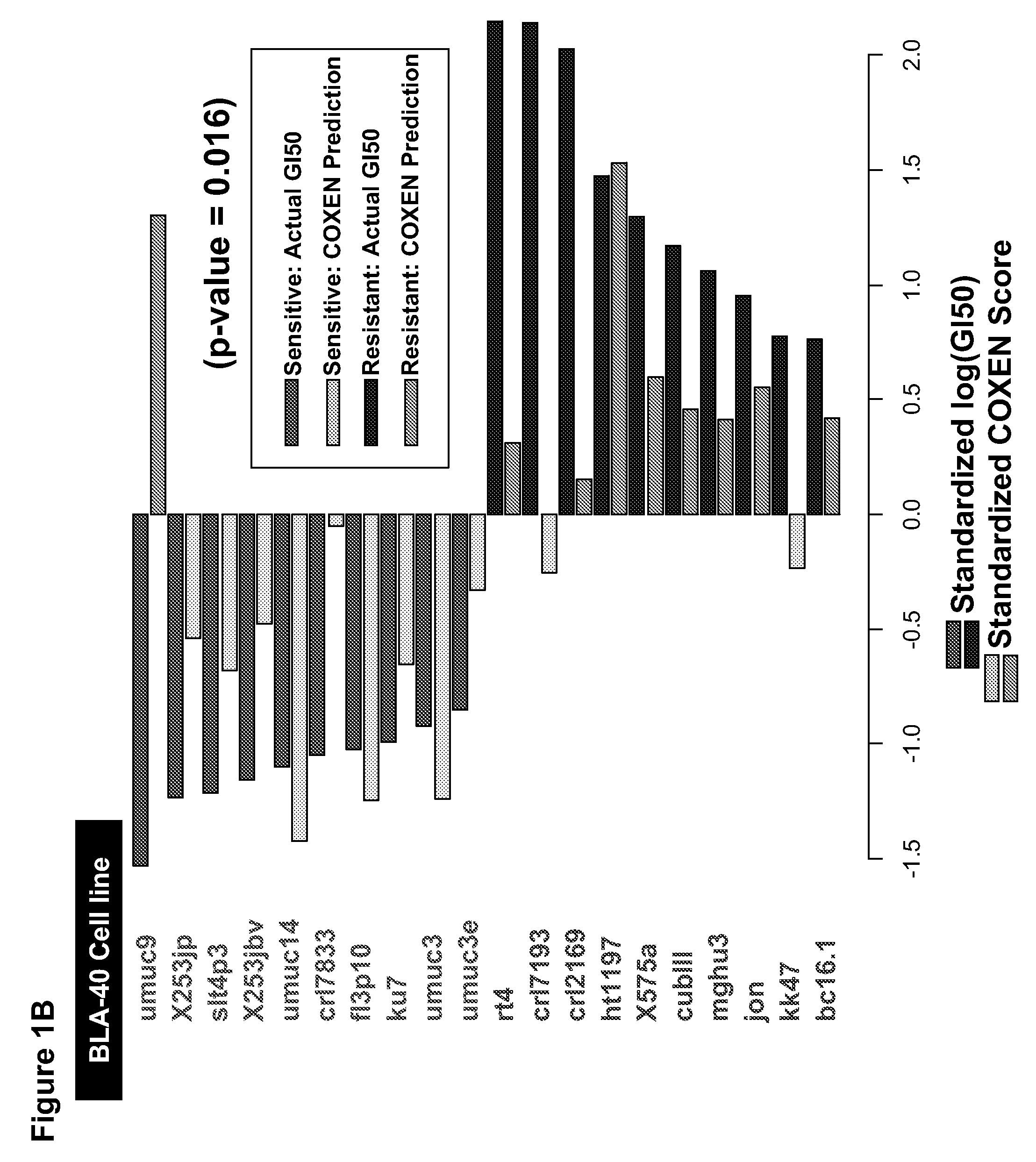Prediction of an agent's or agents' activity across different cells and tissue types
a technology of agent activity and tissue type, applied in the field of prediction of agent or agent activity across different cells and tissue types, can solve the problems of inability to include all important tumor types in the nci-60, challenging the empirical rubric, and not being able to achieve proportionate clinical success with these discoveries
- Summary
- Abstract
- Description
- Claims
- Application Information
AI Technical Summary
Benefits of technology
Problems solved by technology
Method used
Image
Examples
examples
[0161]The invention is now described with reference to the following examples. These examples are provided for the purpose of illustration only and the invention should in no way be construed as being limited to these examples, but rather should be construed to encompass any and all variations which become evident as a result of the teachings provided herein.
[0162]MATERIAL AND METHODS: Below we will provide the materials and methods for COXEN use for single and combination agents. These sections are kept separate for clarity here, but in practice, will be used in an integrated and inter related manner to provide information.
[0163]Material and Methods (Single Agents)
[0164]Drug activity and transcript expression profile data (Steps 1, 2, and 4, FIG. 1A). Publicly available drug sensitivity data, expressed in terms of 50% growth inhibition (GI50) for the NCI-60 were obtained from the NCI DTP web site (dtp.nci.nih.gov). NCI-60 transcript expression profiles were previously generated in ...
PUM
| Property | Measurement | Unit |
|---|---|---|
| time | aaaaa | aaaaa |
| w/w | aaaaa | aaaaa |
| concentrations | aaaaa | aaaaa |
Abstract
Description
Claims
Application Information
 Login to View More
Login to View More - R&D
- Intellectual Property
- Life Sciences
- Materials
- Tech Scout
- Unparalleled Data Quality
- Higher Quality Content
- 60% Fewer Hallucinations
Browse by: Latest US Patents, China's latest patents, Technical Efficacy Thesaurus, Application Domain, Technology Topic, Popular Technical Reports.
© 2025 PatSnap. All rights reserved.Legal|Privacy policy|Modern Slavery Act Transparency Statement|Sitemap|About US| Contact US: help@patsnap.com



